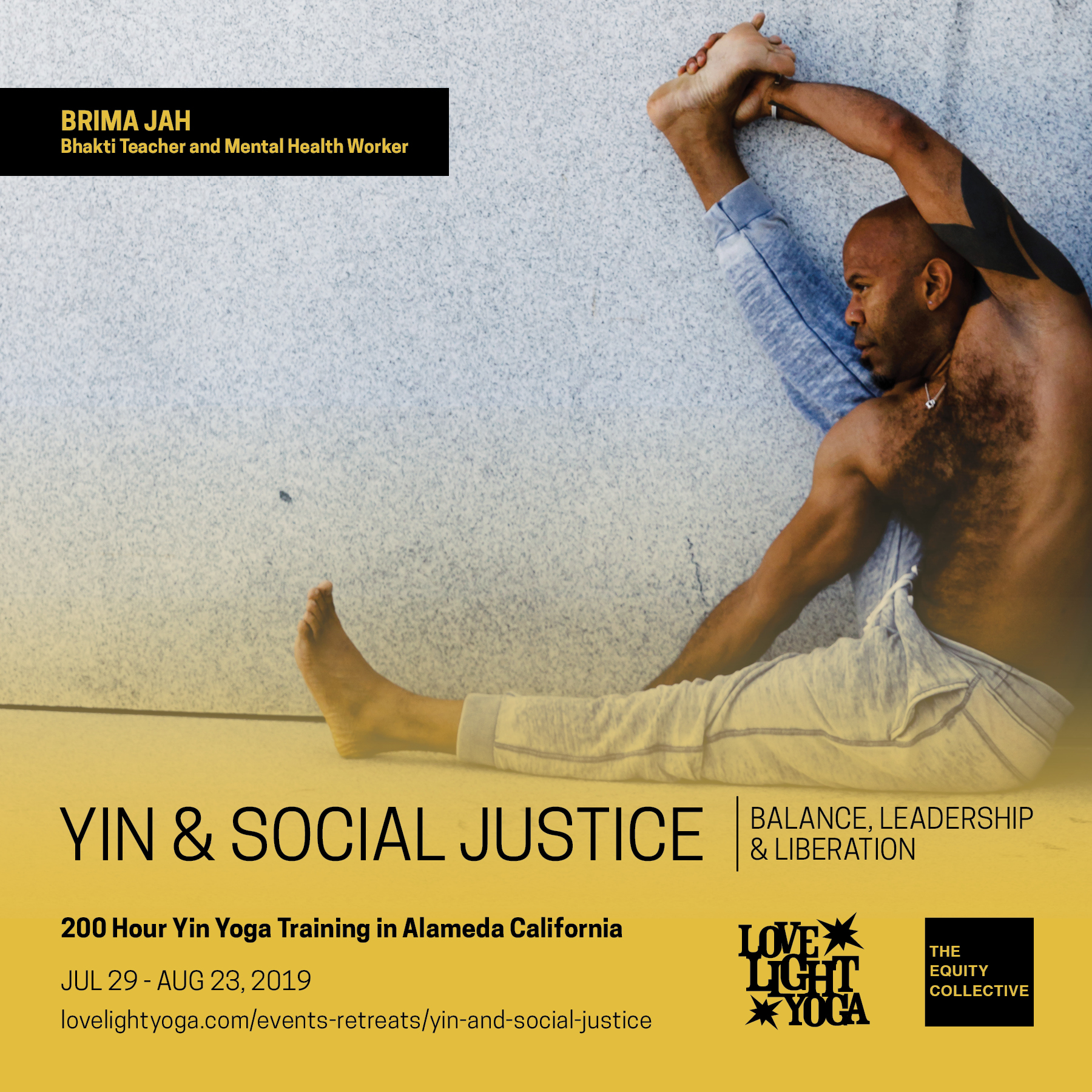Yinterview with Brima Jah
/· When you think about balance, what is your aim as a teacher? Physical, Mental, Spiritual?
The term "balance" seems to mean different things for different people. It's my aim to offer any range of yoga practices, emphasizing that what I do as a teacher is simply offering---not directing, nor prescribing---options for students to explore meeting their own individual definition and experience of balance.
That said, I'm also learning that many of us who practice yoga bring with us to our practice parts of ourselves that are either underdeveloped or overdeveloped with regards to our relationships to our minds, our bodies or whatever each of us may consider to be "spirit." We cis-gendered men, for example, can often---though not always---be socially or culturally conditioned to value their physical body and our intellect, at the cost of neglecting our emotions or intuition.
I aim to be aware of and neutralize my own bias or judgement on what, how or where students practice yoga. As a teacher, my hope is to help students cultivate their own understanding of what may be needed to maintain or restore their own balance. To my role as a teacher, I bring with me my own yoga practice, training, education and life experience that in no way supersedes any students capacity to make observations of their own yoga practice, to develop their own insights and eventually begin or continue to be their own teachers.
· In what ways do you practice balance in your life? How do you instruct students to approach balance?
"Sthira sukham asanam," loosely translated from Sanskrit to English as "steadiness or ease," is literally about striking balance between practicing asana (yoga poses) with effort AND with relaxation. This has meant noticing when I'm "working" too hard or becoming complacent---both in asana practice and all aspects of my daily life including my work life, my relationships or my time alone.
I'm not sure I instruct students to approach balance. I see my purpose as a teacher is, instead, to offer options, observe which options students use for themselves and encourage their on-going inquiry about these options whether or not I'm in the room with them. This inquiry can include on-going internal dialogue students can have with themselves that explores questions like "when am I pushing too hard," "when am I letting go so much that I'm collapsing" or "how am I measuring when I'm pushing too hard or when I'm collapsing?
· How do you see Yoga and Justice as intertwined?
I remember first going to yoga classes and looking for some reflection of myself in the teachers, in the studio, in the community of students or in the practice itself. It had been challenging to see reflections of myself, given the intersectionalaities of my lived experience as a gay man, a person of color, a non-Native English speaker and an immigrant to America. Early on, I'd almost had the sense that practicing yoga was not an option for me, or that yoga was rather, a commodity that belonged primarily to cis-gendered, heterosexual, White middle-aged and affluent women.
This isn't me referring just to cultural appropriation of yoga in the Western world. As I understand it, yoga has its history and evolution that requires no reference point dependent on standards of the Western world. Instead, I'm referring to the notion that I see it as my ethical responsibility, at best with the support of many likeminded teachers, to create visibility and give voice to resistance that dismantles systems of power and privilege that exclude any one from the option to reap the many benefits of yoga practices.
Brima Jah
Bhakti Teacher and Mental Health Worker
All that Brima has loved and hated, avoided or clung to, gained or lost, achieved or failed at, accepted or rejected in his life has compelled him to practice and teach yoga. He recovered from a cervical spine fractures and spinal fusion surgeries through consistent yoga practice.
An eternal student of yoga, he is turned on by discovering the relationship between the "external," or our bodies and the "internal," or our minds. Principles that guide him as a yoga practitioner and teacher are informed by his nearly 15 years exploration of several styles and disciplines: Bikram, Sivananda, Lotus Flow, Iyengar, Trauma-Center Trauma Sensitive Yoga and Katonah.
His study, training and practice of psychotherapy led him into an unfolding quest of bringing awareness to his thoughts, understanding the relationship between his thoughts and emotions, noticing how his emotions influenced his choices, and how those choices either create stagnancy or create freedom.
In this same vein, he teaches yoga based on the assumption that each student lives in their "home," their own body, with an innate wisdom that can remember, reveal, repeat, or restore them through the lens of the yoga practices.
He teaches yoga classes and teacher trainings that are imbibed with yoga philosophy, emphasize inclusivity, balance vigor and ease, humor and warmth, and often chants with his classes.


